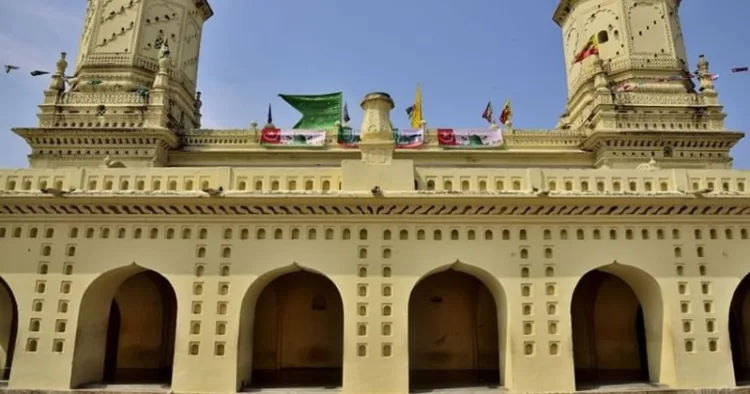Bengaluru: The Karnataka High Court adjourned the hearing of PIL on Jamia Masjid in Srirangapatna , in Mandya district to September 13 next . The court hearing the PIL filed by Abhishek Gowda, a resident of Hosa Kabballu village in Kanakapura taluk, Ramanagara,
The petitioner contended that the madrasa operating inside the Jamia Masjid in Srirangapatna has caused damage to the historic structure through structural modifications, demolition of the compound, construction of bathrooms, destruction of historic sculptures, and daily cooking and consumption of food. The petitioner also noted that the mosque was built during erstwhile king Tipu Sultan.
The legal battle began on January 17 last when Bhajarang sene , a local Hindu outfit workers filed PIL in high court. The Court allowed the case for hearing and directed the issuance of notices to both state and central governments on January 17 last. The petition claims that a madrasa is being operated illegally within an Archaeological Survey of India (ASI) protected mosque in Srirangapatna, Mandya district.
For many years, the debate centered around whether the Jamia Masjid is actually a mosque or the former site of the Mudala Bagilu Anjaneyaswamy Temple, which was allegedly demolished by Mysuru king Tipu Sultan in 17 century The dispute, which has seen numerous protests and Hanuman Sankirtana Yatras, has moved to the legal arena.
Read More: Uttar Pradesh: Allahabad High Court denies bail to Shoeb Akhtar in beheading case of Hindu woman
Petitioner claiming that Tipu Sultan destroyed the Mudala Door Anjaneyaswamy Temple to build the Jamia Masjid. They argue that the mosque stands on the site of a former Hindu temple, citing architectural and structural elements such as temple stones, carvings, an inner kalyani (temple pond), and a kalash (pinnacle) on the tower as evidence. The petitioners are seeking permission to conduct a survey to establish the presence of the original temple beneath the mosque.
The claim that the Jamia Masjid was built over a Hindu temple has been a point of contention for years. Activists and devotees argue that various features of the mosque’s construction are indicative of its Hindu origins. They point to elements such as Hindu temple stones used in the walls, specific carvings, and other architectural details that they believe signify its original purpose as the Mudala Bagilu Anjaneyaswamy Temple. These claims have fueled the ongoing struggle to reclaim the site for Hindu worship.
Over the years, the controversy has sparked numerous protests and religious gatherings, with activists from Hindu organizations demanding the restoration of the temple. Hanuman Sankirtana Yatras, large religious processions dedicated to Lord Hanuman, have been a prominent feature of the movement. These events have drawn significant attention and support from local communities and beyond, underscoring the deep cultural and religious significance of the site.
As the legal battle unfolds, the focus now shifts to the High Court’s proceedings. The outcome of this case could have far-reaching implications for the site’s future and the ongoing dispute between the parties involved.
The renewed legal action by the Bajrang Sena and Hanuman devotees marks a crucial chapter in the ongoing saga of the Jamia Masjid in Srirangapatna. As the case progresses, the region and its residents await a resolution to this deeply rooted historical and cultural dispute.



















Comments